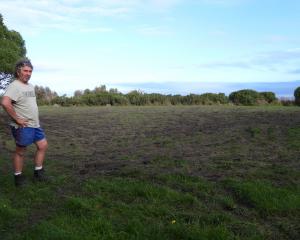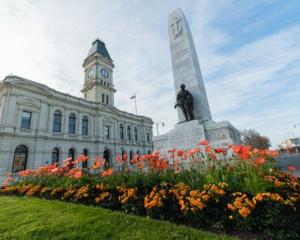
Those who were dissatisfied were up 4 percentage points from 27% last year to 31% this year.
In the Corriedale ward, 51% of residents were dissatisfied with the district’s rural roads, followed not too far behind by the Waihemo ward with 46% dissatisfaction.
Waihemo ward councillor Jan Wheeler said the ‘‘appalling’’ results of the survey showed the ‘‘angst’’ in the community about the lack of maintenance and gravel on the district’s rural roads.
‘‘It doesn’t matter what it costs, just do it,’’ the first-term councillor said.
Corriedale ward councillor Guy Percival said he had put gravel on his ‘‘own road’’ in the last six months.
He said the council had indicated ‘‘changes in operations and direction of our contractors’’ but warned ‘‘some of these changes must be imminent, and we must get our priorities right’’.
‘‘We’ve got the ... money, it’s just the way it’s used,’’ he said.
On Wednesday, the council’s assets committee will consider whether the council ought to refocus its ‘‘special projects programme’’ to address ‘‘low volume’’ roads in the district.
The council set aside $350,000 of the Whitestone Contracting dividend this year, and though the roading team identified a project list of four roads based on the NZ Transport Agency’s (NZTA) formula for minor improvement projects, its report to the committee, published last week, now recommends the money be used instead for 16 low-volume unsealed roads identified through customer service requests.
Council acting chief executive Neil Jorgensen said while the council’s current maintenance contract was ‘‘out of necessity’’ focused on the district’s higher-use roads, the council was ‘‘responding to what the community is asking us to do’’.
‘‘There’s always a scarcity of resources to spend on the roading network,’’ Mr Jorgensen said.
‘‘And some of those smaller roads — the low-volume roads — sometimes miss out. They don’t get as much as we would like, just because it’s not available. And we get a lot of customer requests on those lower-volume roads, whereas we’re not really getting the customer requests on those other projects we had identified.’’
Waitaki Mayor Gary Kircher, who campaigned on improving the district’s roading network when he won re-election last year, said the recently completed consultation for the council’s submission to the Regional Land Transport Plan 2018-21 showed the district supported an increased ratepayer contribution to maintain Waitaki’s roads.
The council’s business case argued for a ratepayer contribution of $1.305million to attract $1.595million from the NZTA’s funding assistance rates and allow the council to follow through on its $2.9million proposal to improve roads.
Now the proposal before the assets committee was to use the $350,000 from the Whitestone dividend to attract up to $266,000 from the NZTA for roading.
‘‘We’re wanting to lift some of the worst roads, as we see them, up into being better roads,’’ Mr Kircher said.
‘‘It fixes a more immediate need, I believe.’’
The number of residents who reported being satisfied with Waitaki’s unsealed roads also increased three percentage points, from 24% to 27% this year.












